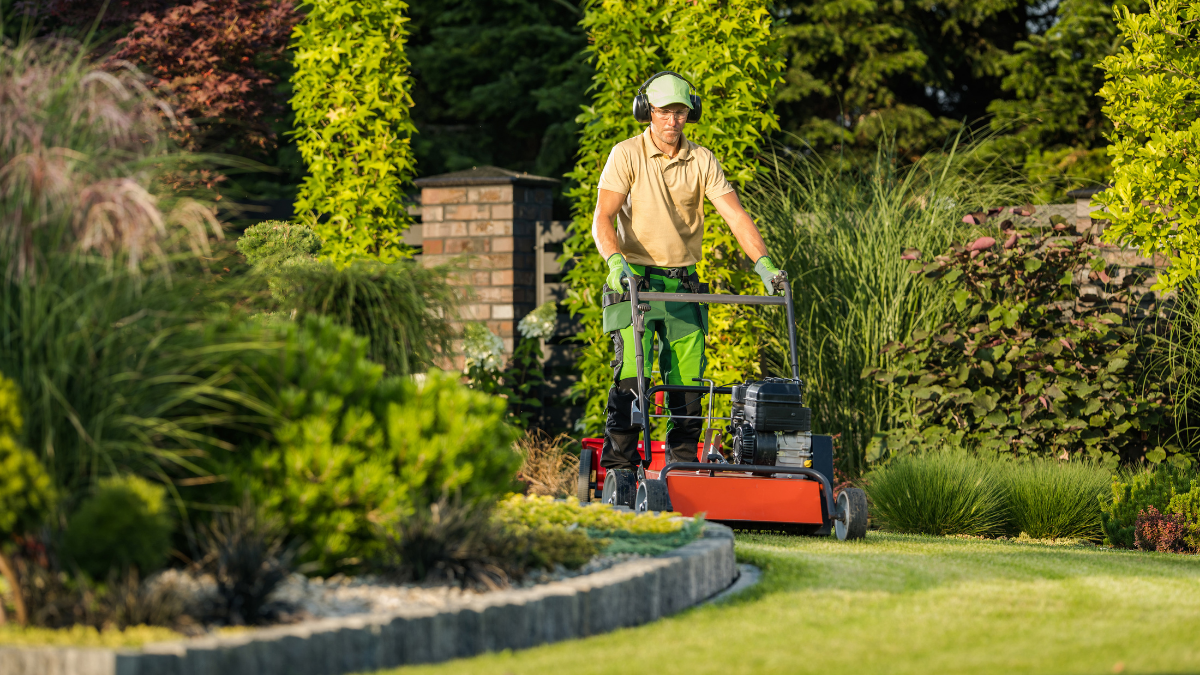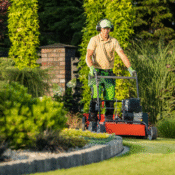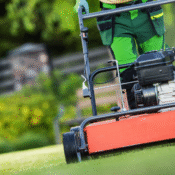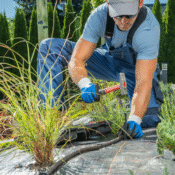
Simple Lawn Maintenance for a Tidy Thanksgiving Yard
Give your yard great Thanksgiving curb appeal! Rake/mulch leaves, perform a final short mow and edge, and water/winterize for a tidy, healthy lawn.
Thanksgiving is quickly approaching, and for many people, that means entertaining family and friends in your house and yard. The first thing guests see is your lawn, but the turkey and pie receive the majority of the attention. A neat, well-kept yard creates a welcoming atmosphere and adds the ideal, picturesque curb appeal for the holidays to your house. The good news? It's not necessary to completely redesign your lawn in order to get it ready for Thanksgiving. You can have a stress-free, tidy appearance with a few targeted, easy fall lawn care chores.
The Crucial Rake: Overcome the Leaf Litter
There's nothing that says "neglected yard" more than a thick layer of fallen leaves. In addition to being unsightly, mating leaves on your lawn is bad for its health. They prevent your grass from getting the air it needs and create the perfect environment for fungal diseases by blocking sunlight and trapping moisture.
This time of year, raking or mulching is the easiest and most important task.- Raking: To get rid of the majority of the debris, a good old-fashioned rake is required if the leaf accumulation is extremely dense.
- Mulching: Use a mulching blade on your lawnmower for less leaf cover. The leaves are chopped into tiny pieces by running over them, and these pieces become embedded in the turf. These microscopic fragments swiftly break down, replenishing the soil with nutrients and valuable organic matter. This is a great way to fertilize your lawn naturally and spares you the backbreaking task of bagging.
For optimal tidiness, try to have your lawn fully mowed a few days prior to the holiday. Give Lawnworx a call at 706.620.3544!
Edging and Final Mow for a Stunning Curb AppealA final fall mow is essential, even though you may believe that the lawn-mowing season is over. Aim for a cut of 2 to 2.5 inches shorter than your typical summer height. The grass plant's crown receives more sunlight thanks to this shorter cut, which fortifies it for the winter. Additionally, it lessens the possibility that the blades will mat down in the event of snow or severe frost, thereby reducing the risk of snow mold disease.
After completing the last cut, concentrate on the edging. For the least amount of work, this easy step yields the biggest visual reward. Sharpen the edges of garden beds, sidewalks, and driveways with an edger or string trimmer. The entire yard appears well-kept and ready for visitors right away when the edges are clean and sharp.
Winter Preparation and Intelligent WateringEven though your grass doesn't require as much watering as it would in the summer, it still needs moisture, particularly if you live in a dry climate.
- Hydrate the roots. If there hasn't been enough rainfall, keep watering your lawn deeply (but not often). In order for the grass to survive the winter and flourish the following spring, deep watering promotes the growth of deeper, stronger roots.
- Aerate Areas with High Traffic: Think about core aeration if you have areas that receive a lot of foot traffic. By removing tiny plugs of soil from the ground, this procedure improves the exchange of oxygen, nutrients, and water while also reducing soil compaction. For your lawn to survive the winter, improved air circulation is essential.
In fact, late fall, right before the ground freezes, is the ideal time to apply winterizer fertilizer, a slow-release, potassium-rich formula. By feeding the grass roots throughout the winter, this promotes a quicker green-up and healthier turf in the spring.
Fast Cleaning and DecorationsThere is more to a neat yard than just the grass. Spend a few minutes discussing the specifics that will leave the biggest impression on your guests.
- Control of Weeds: Remove any visible weeds that have appeared between pavers or in flower beds as soon as possible.
- Clear Hardscapes: To remove dirt, pine needles, and leaves from patios, decks, and walkways, use a broom or leaf blower.
- Cut Off Dead Blooms: Trim back any unkempt shrubs and deadhead any summer perennials that are still alive. A beautiful visual anchor can be created by placing a few seasonal, fresh planters with vibrant cabbages or cold-hardy mums close to the front door.
You can make sure your yard is not only clean for Thanksgiving but also ready for a restful winter and a healthy spring come by following these easy steps.
Avoid making your holiday stress worse by doing yard work. For a consultation and complete fall lawn care, give Lawnworx a call at 706.620.3544.
Frequently Asked Questions (FAQ) Should I fertilize my lawn before Thanksgiving?It depends on your climate and specific needs. Generally, late fall is the ideal time to apply a winterizer fertilizer (high potassium) to strengthen the roots for winter. If you've missed this window or are unsure, it's better to wait or call a professional. Avoid high-nitrogen summer fertilizers, as they can encourage tender growth susceptible to frost damage.
Is it better to rake leaves or mulch them?If the leaf layer is thin enough that you can still see the grass through it, mulching them with your mower is better. It's easier, and the shredded leaves provide free nutrients back to your lawn. If the layer is thick enough to smother the grass (you can't see the lawn), you must rake or bag the leaves to remove the bulk before mulching the remainder.




